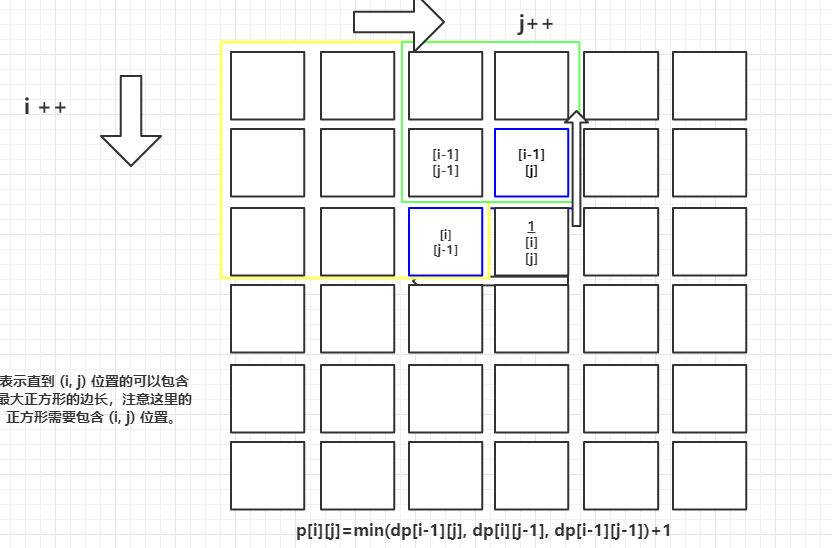2020.08.14
1 |
|
可以看成一个特别大的正方形,然后扣掉左上角和右小角(当前 arr[i][j])这样,其实决定的就是上,左,和上左所决定的三条线距离.

1 | //Given a binary tree, return the inorder traversal of its nodes' values. |
节点全部都是入栈的,只不过每次都是入左臂所有节点, 综合起来就可以看成这样

其实左臂就已包含所有节点,不要片面的去考虑分支的方向,点就在那里,任凭你左链右链,它不增不减
Since 10^{i}$ \equiv 1(mod 9) ,then =>
(a_{i}$ * 10^{i}$ + a_{i-1}$ * 10^{i-1}$ + …) mod 9 = (a_{i}$ * 10^{i}$ mod 9 + a_{i-1}$ * 10^{i-1}$ mod 9 + …) mod 9
= (a_{i}$ + a_{i-1}$ + …) mod 9
https://en.wikipedia.org/wiki/Digital_root#Congruence_formula
For base b (decimal case b = 10), the digit root of an integer is:
- dr(n) = 0 if n == 0
- dr(n) = (b-1) if n != 0 and n % (b-1) == 0
- dr(n) = n mod (b-1) if n % (b-1) != 0
or
- dr(n) = 1 + (n - 1) % 9
Note here, when n = 0, since (n - 1) % 9 = -1, the return value is zero (correct).
From the formula, we can find that the result of this problem is immanently periodic, with period (b-1).
Output sequence for decimals (b = 10):
1 | ~input: 0 1 2 3 4 ... |
Henceforth, we can write the following code, whose time and space complexities are both O(1).
1 | class Solution { |
Input: 00000010100101000001111010011100
Output: 00111001011110000010100101000000
Explanation: The input binary string 00000010100101000001111010011100 represents the unsigned integer 43261596, so return 964176192 which its binary representation is 00111001011110000010100101000000.
https://leetcode.com/problems/reverse-bits/discuss/54741/O(1)-bit-operation-C%2B%2B-solution-(8ms)
1 | class Solution { |
Explanation:
// 12345678
// 56781234
// 78563412
// 87654321
- Post title:2020.08.14
- Post author:ReZero
- Create time:2020-08-14 11:35:00
- Post link:https://rezeros.github.io/2020/08/14/leetcode/
- Copyright Notice:All articles in this blog are licensed under BY-NC-SA unless stating additionally.